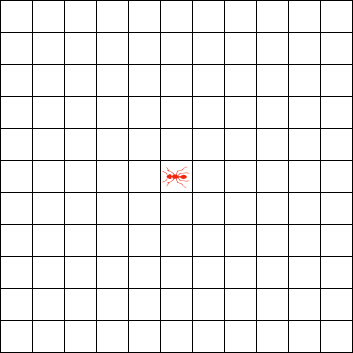
- By Rowan Lea
- ·
- Posted Jan 25, 2024 10:21:11 AM
Songbird
Inspired by the creative works of Gawain Hewitt: https://gawainhewitt.co.uk/
Ants have amazing skills, from lifting 5000 times their weight to naturally resorting to heuristics when solving problems, this kata pays a little homage to our little fellows in the observing of emergent behaviour.
We'll have an application that has an ant running on a grid, and we will pass rules to it to observe its behaviour. This is also known as a Langton's Ant.
Considering the rules:
'RL'):
'x' iterations.To make things more interesting we can change the amount of colours we are using. The colours are modified in a cyclic fashion. A simple naming scheme is used for each of the successive colours, a letter "L" or "R" is used to indicate whether a left or right turn should be taken. Langton's ant has the name "RL" in this naming scheme.
If you decide to implement an hexagonal grid for example, you open up the following notations as well:
'U' turns 180°'R1' turns 60° clockwise'R2' turns 120° clockwise'L1' turns 60° counter-clockwise'L2' turns 120° counter-clockwise

Inspired by the creative works of Gawain Hewitt: https://gawainhewitt.co.uk/

What do we want to build? We are building a shopping cart for an online grocery shop. The idea of this kata is to build the product in an iterative..

Iteration 1 Business rules We want to build an ATM machine and the first thing we need to do, is to create the software that will breakdown which..
Join our newsletter for expert tips and inspirational case studies
Join our newsletter for expert tips and inspirational case studies